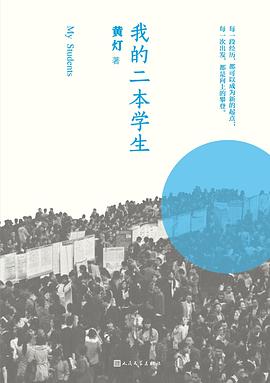WULOLIFE
《我的二本学生》作者: 黄灯 出版社: 人民文学出版社
《我的二本学生》作者: 黄灯 出版社: 人民文学出版社
Couldn't load pickup availability
Description
内容简介 · · · · · ·
作者黄灯在一所二本院校从教,长期的课堂教学以及课后的师生交流,使她成为这群学生成长变化的见证者。《我的二本学生》相当于她的教学札记,这里面有她15年一线教学经验的分享,对4500个学生的长期观察和长达10年的跟踪走访,也有两届班主任工作的总结思考,更有近100名学生的现身说法,是黄灯向读者描摹一群年轻人生活剪影的尝试。
截至2020年6月,全国有3005所高等学府,其中本科院校1258所,人们熟知的985和211院校只占100多席,二本及以下学生面目是有点模糊的。为了让读者真切了解二本学生这一群体的社会性现实,在书中,黄灯做了跨越时间的、空间的、地域文化的差异性对比,借以考察时代变化、生源地、家庭流。
书中最真切动人的,是一个个具体学生的采访日志。在这些用学生名字命名的章节中,访谈个体向读者倾吐着他们对于高考的回望、对于城市生活的生疏、对于毕业的迷茫以及就业的慌张。在这些倾诉中,你将了解他们彼此之间的社交距离、他们和这个社会的认识过程;他们与父母兄妹之间交流的阻畅、与故园乡土的亲疏;他们对于网络文学和游戏的认识、对于新媒体时代的适应和迷失;他们对于考公务员和考研之间的权衡,对于安稳和漂泊的抉择。还有他们对自己人生还有父母、乃至国家责任的担当与跋涉。这每一个被当事人讲述出来的故事,都带着看得见的呼吸、烟尘、脚步还有凝视。在这些极为细致和具体的生命切片中,我们看到的已经不再是二本学生,而是八五后、九零后这一批年轻人,他们所有人。他们所并没有将他们彼们共享的课题。
